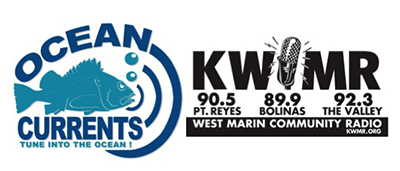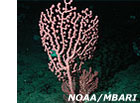 Using Deep Sea Corals to study the environment
Using Deep Sea Corals to study the environmentGuest: Tessa Hill, Assistant Professor, Department of Geology, Bodega Marine Lab, UC Davis
Deep-sea corals can live for hundreds of years, but have laid mostly undiscovered. Learn how and where these corals are found and how scientists are using them as well as nearshore ancient sediments to understand our climate history on our planet. You may be surprised to find out where these corals are found!
Read the transcript here.
October 5, 2009
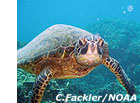 Loggerhead Turtle Conservation work and Building Ocean Stewards Globally
Loggerhead Turtle Conservation work and Building Ocean Stewards Globally Guest: Wallace J. Nichols
Ocean Revolutionary J. Nichols talks about his collaborative science and conservation work with Loggerhead Sea Turtles in Mexico and his education, inspiration, conservation work that he continues to build on nationally and internationally with communities everywhere. J is a co-founder of Ocean Revolution, an organization that works to build youth stewards internationally for the ocean.
Read the transcript here.
July 7, 2009
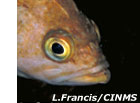 Highlights from the National Marine Educators Association
Highlights from the National Marine Educators Association Guests: Craig Strang, Dr. Felicia Moore, staff from Algalita Marine Research Foundation, Carey Morishige, Grant Washburn
This show is a compilation of interviews from presenters at the annual National Marine Educators Association Conference in Monterey, CA. The show starts with an overview of NOAA's marine debris program, a live interview with staff from Algalita Marine Research Foundation, and moves towards ocean literacy with an interview with Craig Strang and Dr. Felicia Moore, and ending up with an overview of surfing at the infamous Mavericks, with filmmaker/surfer Grant Washburn.
Read the transcript here.
June 1, 2009
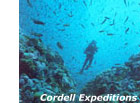 Cordell Expeditions: The early explorations of Cordell Bank
Cordell Expeditions: The early explorations of Cordell Bank Guest: Bob Schmieder, Founder of Cordell Expeditions
This intrepid group of divers dove SCUBA on Cordell Bank in the late 1970's and early 80's. Their explorations were instrumental in the designation of Cordell Bank National Marine Sanctuary in 1989. 2009 is the 20th anniversary of the sanctuary's designation. Bob talks about the very beginning and how this expedition to Cordell Bank started.
Read the transcript here.
May 4, 2009
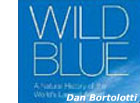 Blue Whales
Blue WhalesGuest: Author Dan Bortolotti
Author Dan Bortolotti, talks about his latest book Wild Blue: A Natural History of the World's Largest Animal. Blue whales, an endangered species, utilize the productive food rich waters of the national marine sanctuaries on the west coast from Olympic Coast to Channel Islands in Santa Barbara. Hear about this fascinating animal, from the whaling era to how scientists are working to better understand this massive marine animal.
Read the transcript here.
April 6, 2009
Monitoring oceanographic conditions in the Gulf of the Farallones and Cordell Bank National Marine Sanctuaries
Guest: Jaime Jahncke, Ph. D. PRBO Conservation Science and Lisa Etherington, Ph. D. Cordell Bank National Marine Sanctuary
PRBO Conservation Science and Cordell Bank and Gulf of the Farallones National Marine Sanctuaries are collaborating to monitor the oceanographic conditions in the sanctuaries off the coast of Point Reyes. Find out what type of data they are collecting, how they do it, and how the data is used.
Read the transcript here.
March 2, 2009

Ambient Noise in the Ocean
Guest: Dr. John Hildebrand
Human generated noise in the ocean has increased steadily in the past few decades. Dr. John Hildebrand, from Scripps Institute of Oceanography discusses the use of sound by mammals and how he uses sound and listening to study marine mammals. He also discusses the ambient noise pollution rise in the past few decades and its potential implications.
Read the transcript here.
February 2, 2009
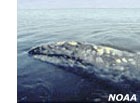
Gray Whales
Guest: Dr. Liz Alter
Have gray whale populations returned to pre-whaling era populations? Liz Alter studied the genetic variation of the current population and what she found out may be a surprise to you.
Read the transcript here.
January 5, 2009

Leatherbacks in the Pacific
Guest: Scott Benson, NOAA and Michael Milne, Sea Turtle Restoration Project
The leatherback sea turtle has been on our planet for 70 million years, has survived huge changes on the planet, yet has met its worst enemy, humans. In the past 30 years leatherbacks have plummeted to 95% of their original estimated population numbers. Hear from NOAA biologist Scott Benson who studies leatherbacks and their large and small scale movements, and Mike Milne from the Sea Turtle Restoration Project who is working to help protect turtles.
Read the transcript here.


